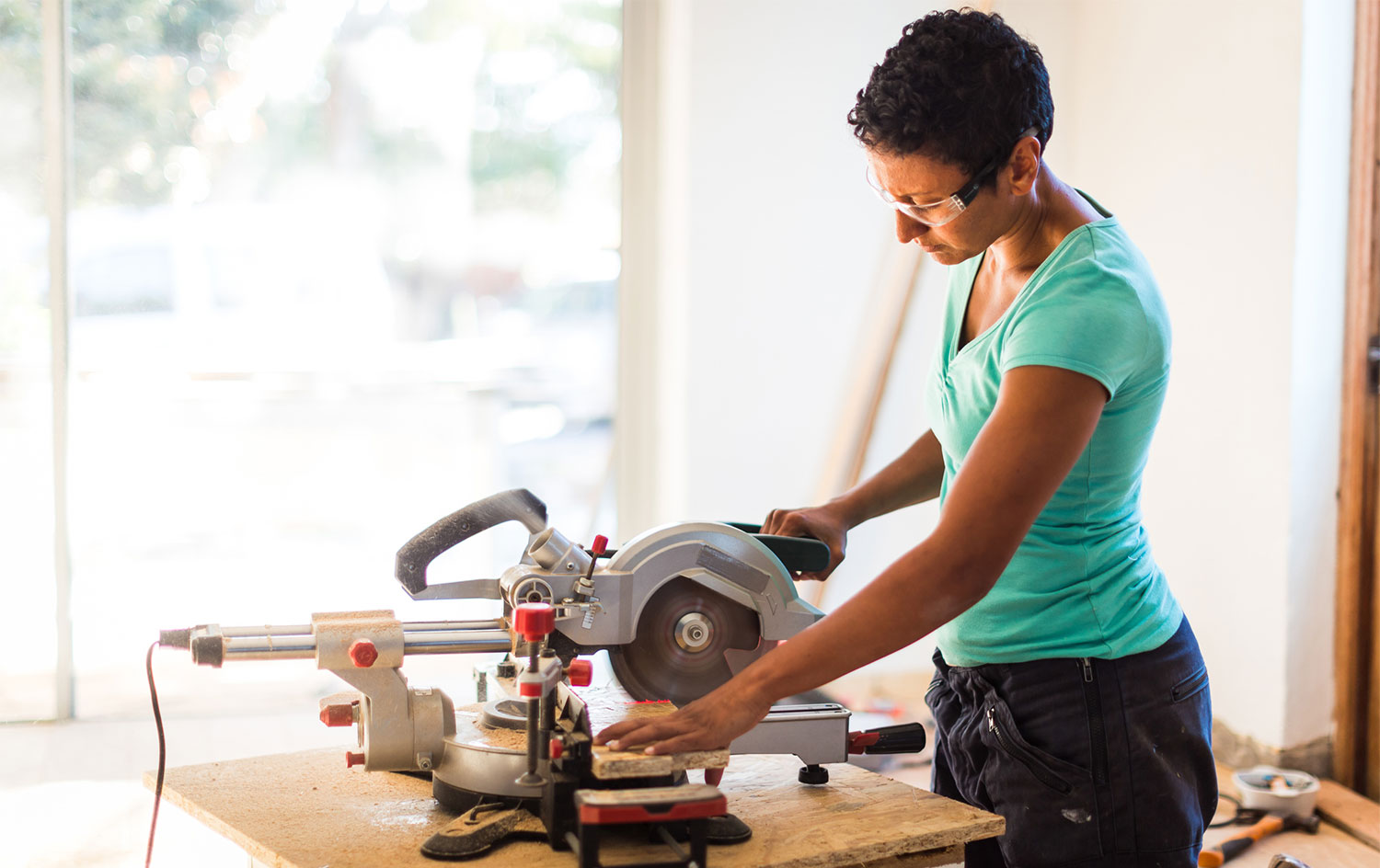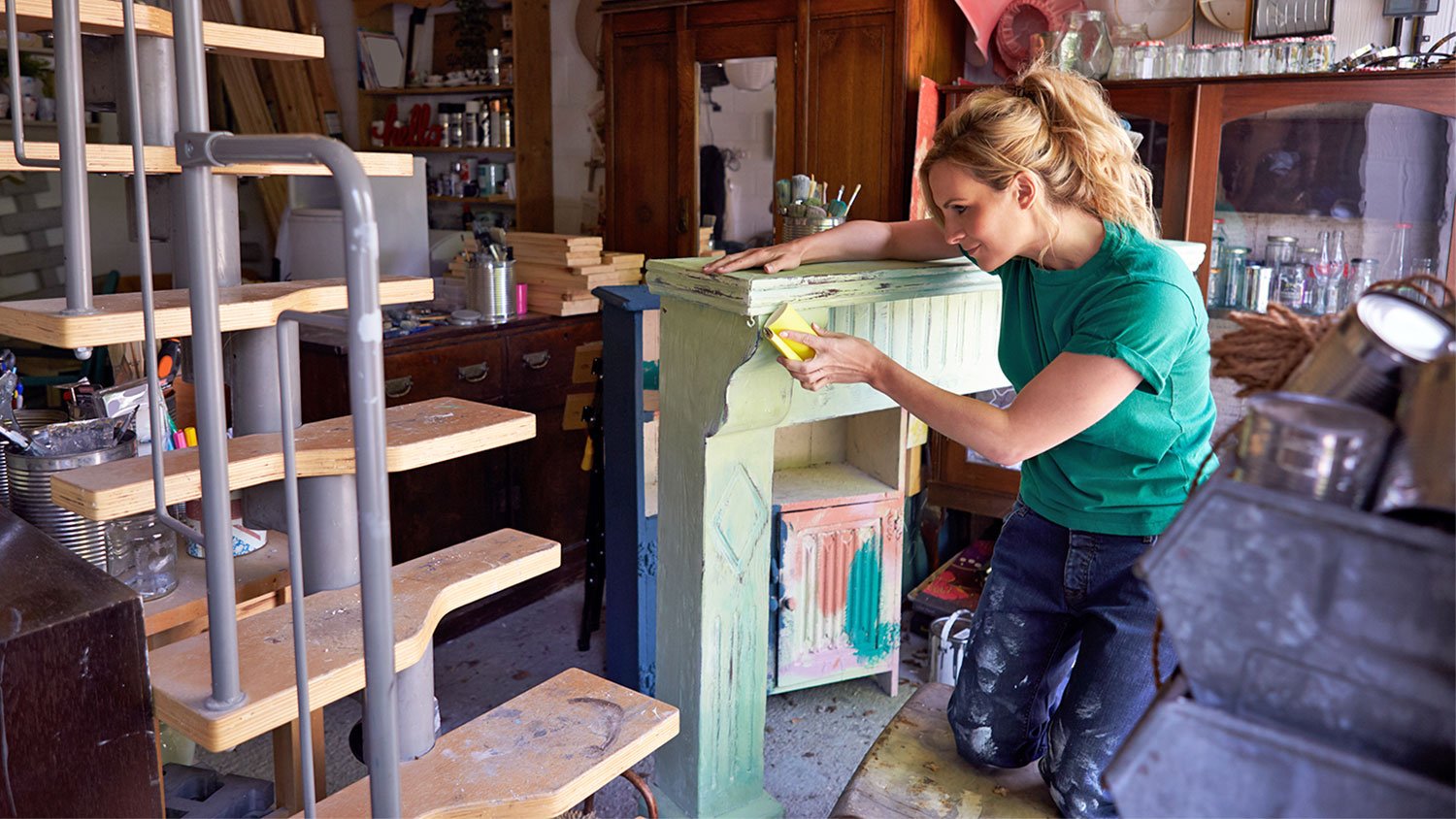Make a DIY Towel Ladder in 6 Easy Steps
You don't need to be a professional woodworker to build your own towel ladder


A towel ladder, sometimes also known as a blanket ladder, can help create more storage—and style—in a bathroom. Not only does it give you an out-of-the-way place to store towels, but it puts them on full display.
If you’ve been wondering how to construct a DIY towel ladder for your home, we’ve got you covered. Our step-by-step guide lets you know what materials to gather, how to put them together, and how long everything will take. Let’s get started.
Difficulty Score: 2 out of 5
Time: 3 hours (includes drying time)
Tools and Materials Needed:
(1-2) pine dowel rods, 1” in diameter
(2) 2”x3” pine studs
Miter saw
Wood glue
Sandpaper (various grits)
Brad nailer (optional)
Drill with a three-quarter-inch paddle
Hardwax oil
Red buffing pad
White buffing pad
1. Measure Space and Prep Work Area
Making a DIY towel ladder isn’t an advanced woodworking project, but there are still some safety protocols you should follow.
When cutting wood, always wear safety glasses. Earplugs or muffs should be worn when operating loud power tools and machinery. Finally, wear a respirator or face mask when sanding or using a drill to keep fine particles from entering your lungs.
Once you have all your protective gear together, you can officially kick off the project by determining your towel ladder’s measurements.
You can completely customize the towel ladder’s size based on your available space. A towel ladder resting against a wall will need to be taller than one mounted above a toilet. You should also decide how many rungs you want your ladder to have and how wide you want them to be.
2. Make Your Cuts

Now that you have your personalized measurements, it’s time to cut. Mark your pine boards to size and cut them with a miter saw.
Next, mark your dowels. Keep in mind that they will sit one-half-inch inside the board on both sides. If you don’t want to lose any length, add 1 inch to your measurements and mark accordingly. Cut as marked.
3. Sand Your Wood
Once all your pieces are cut, sand them smooth. An electric hand sander will be faster, but you can sand by hand as well. Start with 120-grit sandpaper and follow up with 220-grit. If needed, you can finish with 320-grit sandpaper for a perfectly smooth finish.
4. Mark and Drill Holes
Next, measure out the spacing between the rungs of your ladder. If you’re not sure where to place the rungs, take a few minutes to assemble your ladder on the ground to get an idea of what it will look like with different degrees of spacing.
Once you’ve decided, carefully measure and mark where to drill each hole. To prep your drill, you can either mark it with one-half inch of colored tape or position a collar to keep you from drilling too deep.
Once prepped, drill coordinating one-half-inch deep holes on one side of each board, making sure they all line up perfectly. Finish with a light sanding.
5. Place and Secure Rungs
Sand down the edges of each rung. This will help them fit snugly inside each hole. Fill the holes on one 2-by-3-inch pine stud with wood glue. Insert the rungs.
Quickly fill the holes of the other 2-by-3-inch pine stud with glue and sandwich the rungs. Secure each rung with a clamp. If you don’t have clamps, place the ladder on one side and add weight to the other side for pressure. Wipe away excess glue with a damp cloth. Allow the glue to dry for at least two hours.
Optional: You can also use a brad nailer for stronger rungs. This is helpful if you plan on hanging baskets or storage bags on your ladder.
6. Add Finish

Remove your clamps and sand away any excess glue. Your towel ladder is ready for a finish. You can paint it, stain it, or just seal it if you like the natural look of the wood.
One suggestion is to use hardwax oil. The oil penetrates the wood fiber to form a hard protective coating. This is more durable than polyurethane or other topical finishes.
To buff the oil on, pour a bit onto a red buffing pad. Work the oil into the grains of the wood in a thin, even coat. Remember that less is more when it comes to wax oil finishes. Immediately after applying the oil, use a white polishing pad to remove any excess. Repeat the process until you’re happy with the finish.
Your DIY towel ladder is now ready to be proudly displayed!
Another Option: Working With a Professional
You can certainly hire a professional carpenter to construct a towel ladder for your bathroom. You can expect to pay between $35 and $100 per hour for labor, according to HomeAdvisor, plus materials. You can reach out to a carpenter near you to get an exact quote.
You also have the option of buying a premade towel ladder. Online prices range from approximately $50 all the way up to $400. If you’re a fan of repurposing furniture, you may be able to track down a ladder at a second-hand store that you can cut to size or refinish.




- Safety First, Painting Second! Follow These Tips To Paint on a Ladder
- Step It Up With These Ladder Safety 101 Tips
- How to Paint High Ceilings: 8 Tips to Try
- How to Waterproof Wood With 3 Simple Methods
- Remodeling Tools Every DIYer Should Be Familiar With
- How to Paint Hardwood Floors for the Best Results
- How to Inspect a Roof Without Getting on It
- 9 Great Tips for Refinishing Your Hardwood Floors
- 14 Home Renovation Tips for a Stress-Free Project
- How to Build a House: Your Complete Guide to the Home-Building Process














